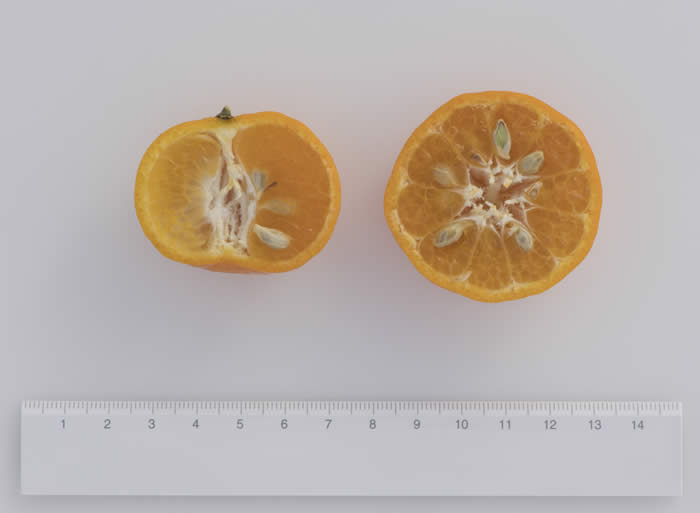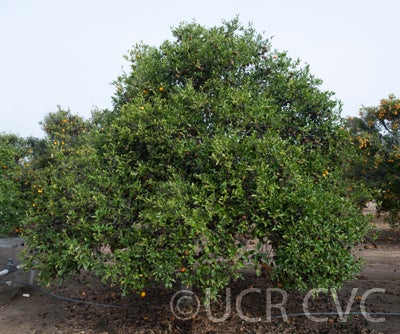Citrus kinokuni hort. ex. Tanaka
CRC 0696
PI 539270
Source
Received as seed from P.J. Wester, Lamao, Bataan, Philippine Islands, 1915.
Parentage/origins
Parents unknown.
Rootstocks of accession
Carrizo citrange, C-35 citrange
Season of ripeness at Riverside
October to November
Notes and observations
A small oblate mandarin, imported from China in Feb. and March, of excellent quality. Identified as Kinokuni mandarin by Dr. T. Tanaka when here in 1928--RGL. Kinokuni description is given in TCI, Vol. I, pp 525. A seedless form (Mukakukishu) was imported in 1979, CRC 3887, 12B-39-13, 14. 3/87-Very small fruit, light orange rind color--EMN.
Description from The Citrus Industry Vol. 1 (1967)
"This species is the kishû mikan of Japan. The fruit is small, somewhat oblate, depressed at both ends, orange-colored, and glossy. The thin, comparatively tight rind is easily peelable and fragrantly aromatic. The flesh is firm, meaty, and pleasantly sweet in flavor. Seeds are few, polyembryonic, and have pale green cotyledons. Fruit maturity occurs in early midseason.
The kinokuni is said to be a very old species of Chinese origin and one of the earliest introduced into Japan, where it is still popular because of its pleasant flavor and rich fragrances Tanaka (1954, p. 136) states that at least four varieties are known, the largest of which is Hirakishu. Mukakukishu is a completely seedless variety."
Availability
Not commercially available in California.
USDA Germplasm Resources Information Network page for Kinokuni mandarin


